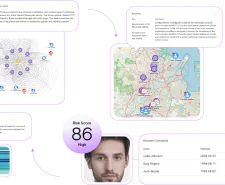
GraphAware: Finding Truth in Data
October 4, 2024 · 2 min read

Reimagining Intelligence Visualisation: An Inside Look at Action Boards with GraphAware CEO & Head of Product
August 30, 2024 by Michal Bachman, Miro Marchi · 8 min read

The Importance of Connected Data Analytics in Modern Military Intelligence
July 29, 2024 by Gabriel T. · 5 min read

What’s new in Hume 2.24?
July 1, 2024 by Danica Stankovic · 5 min read

Growing Interest in Graph Technology Among the Security Community
June 25, 2024 · 2 min read

Improving Different Ultimate Beneficial Ownership Investigation Types With Graph Technology
June 24, 2024 · 5 min read
